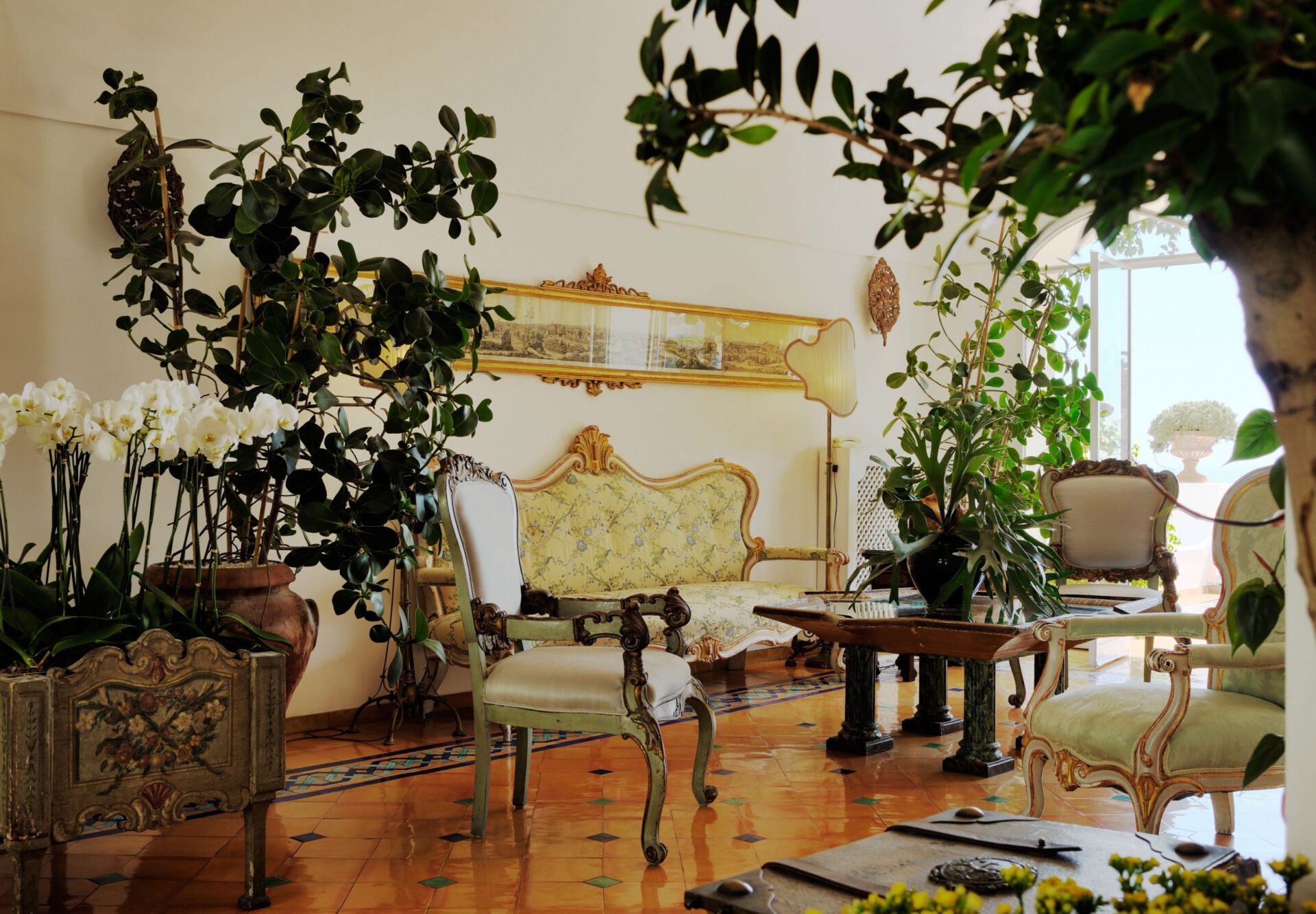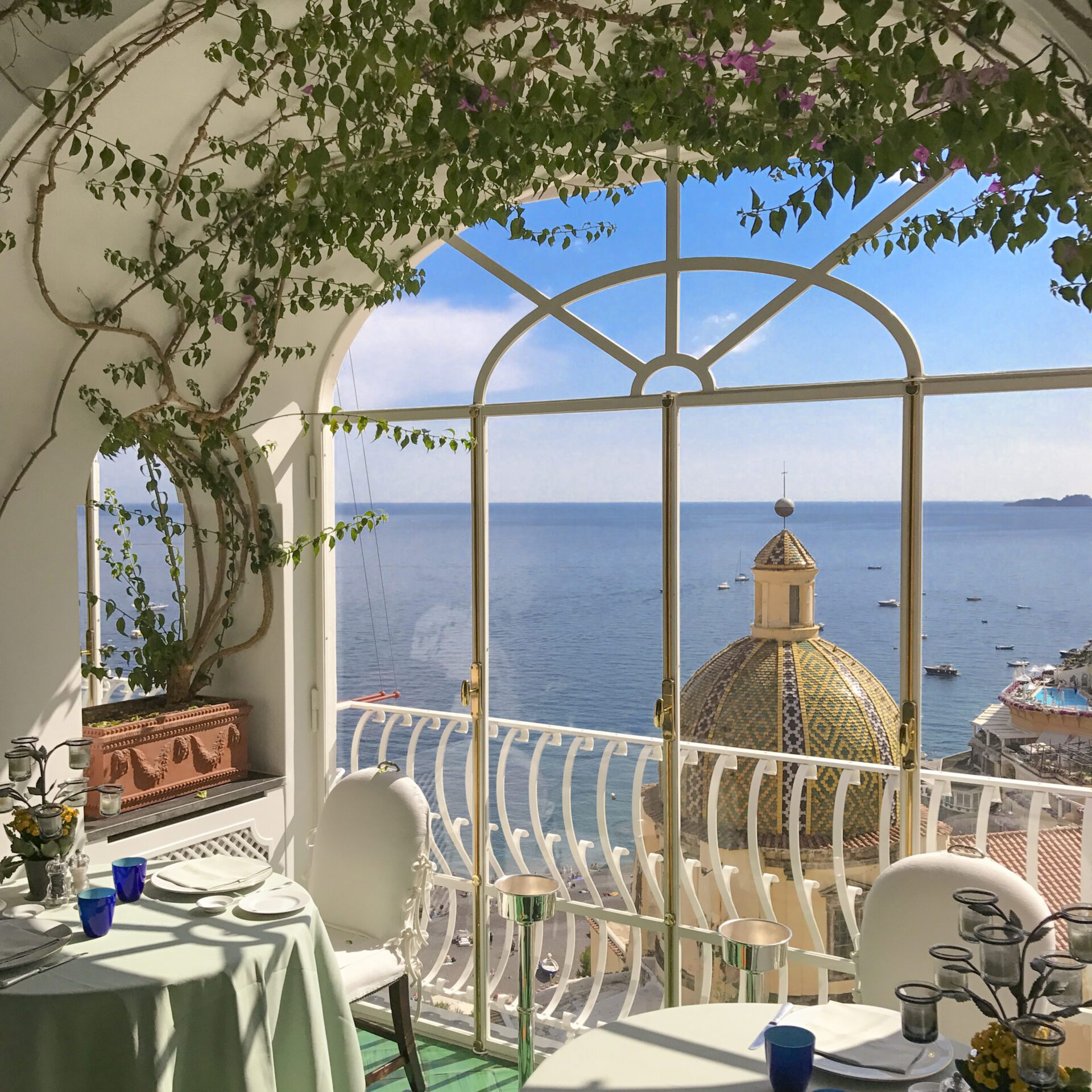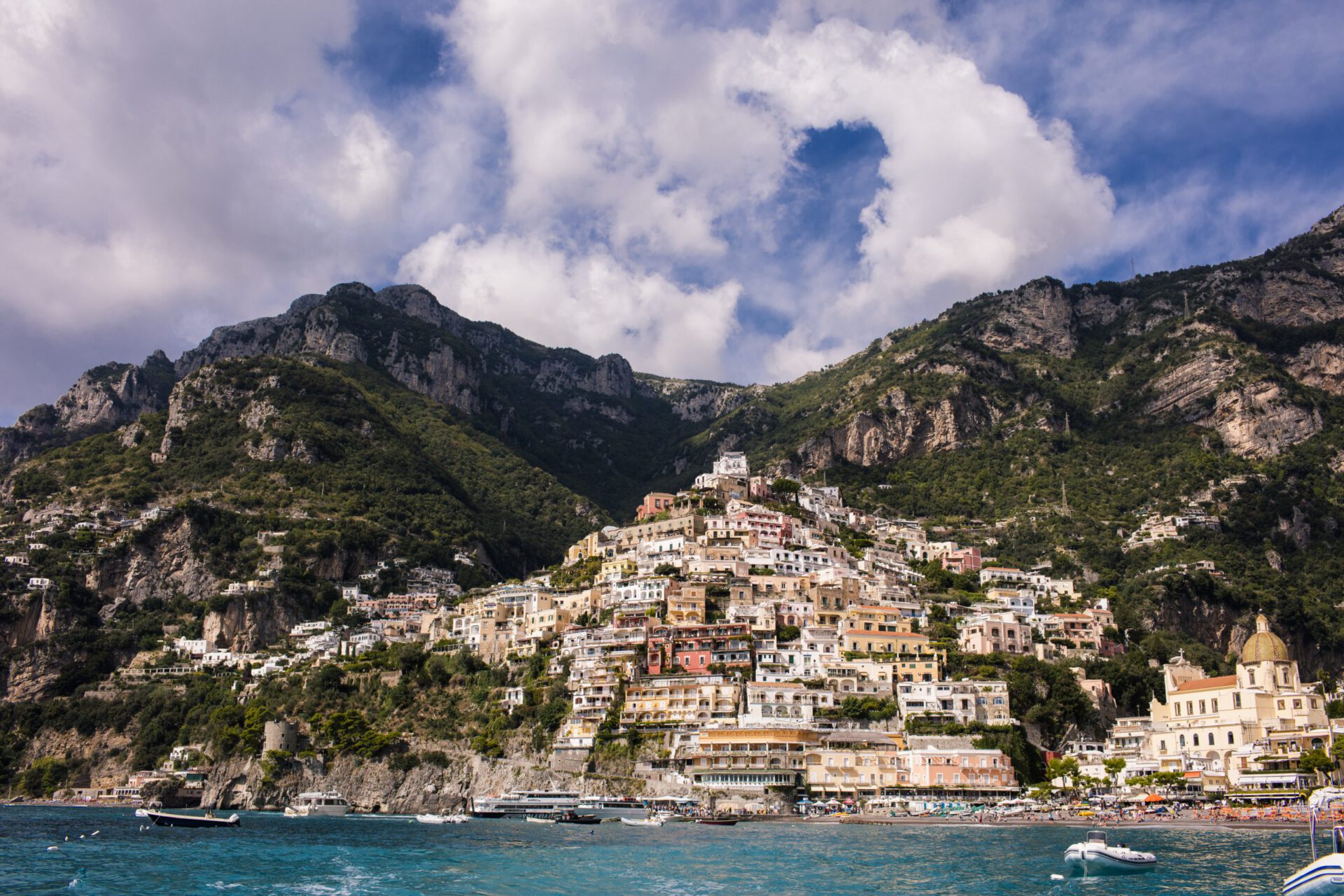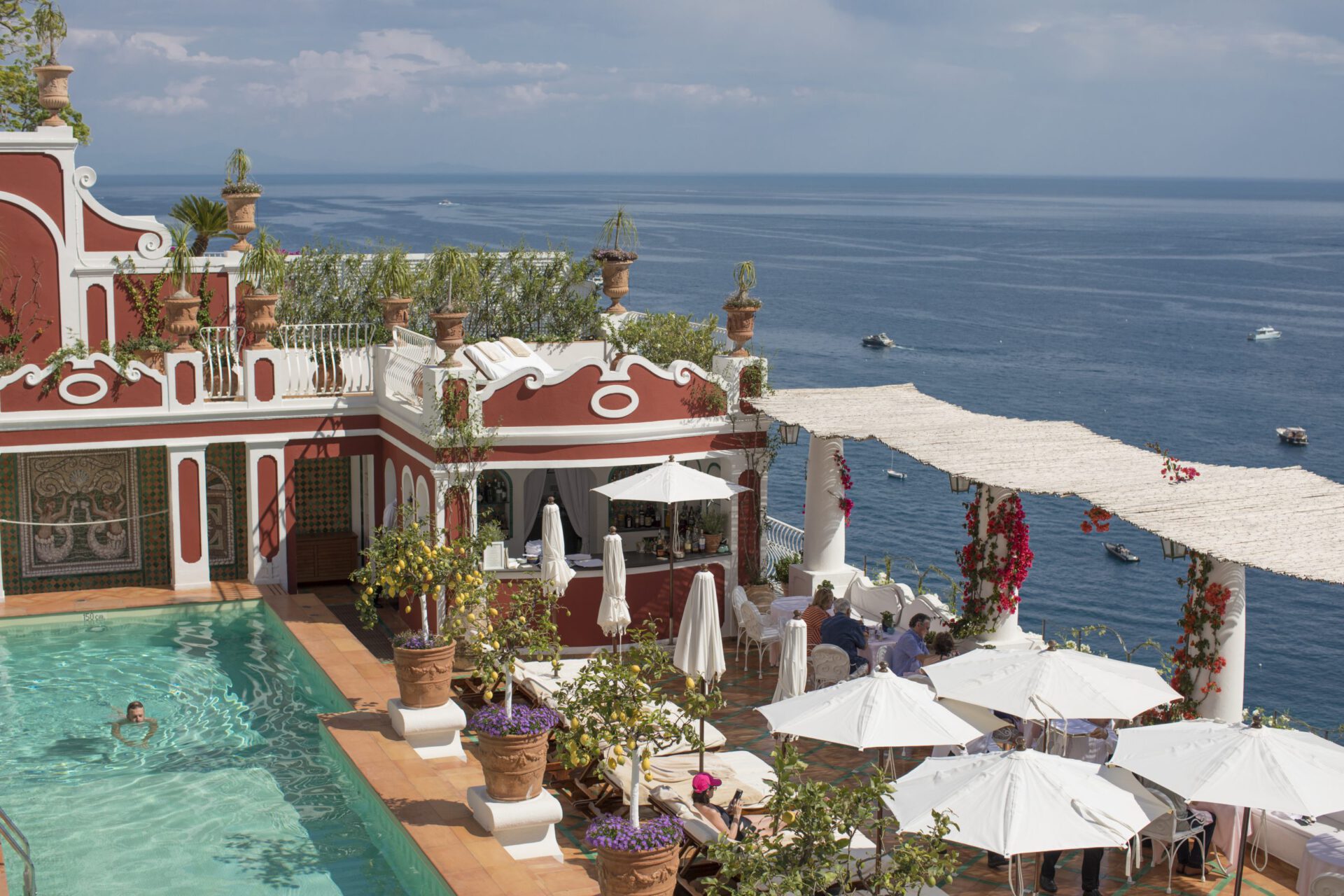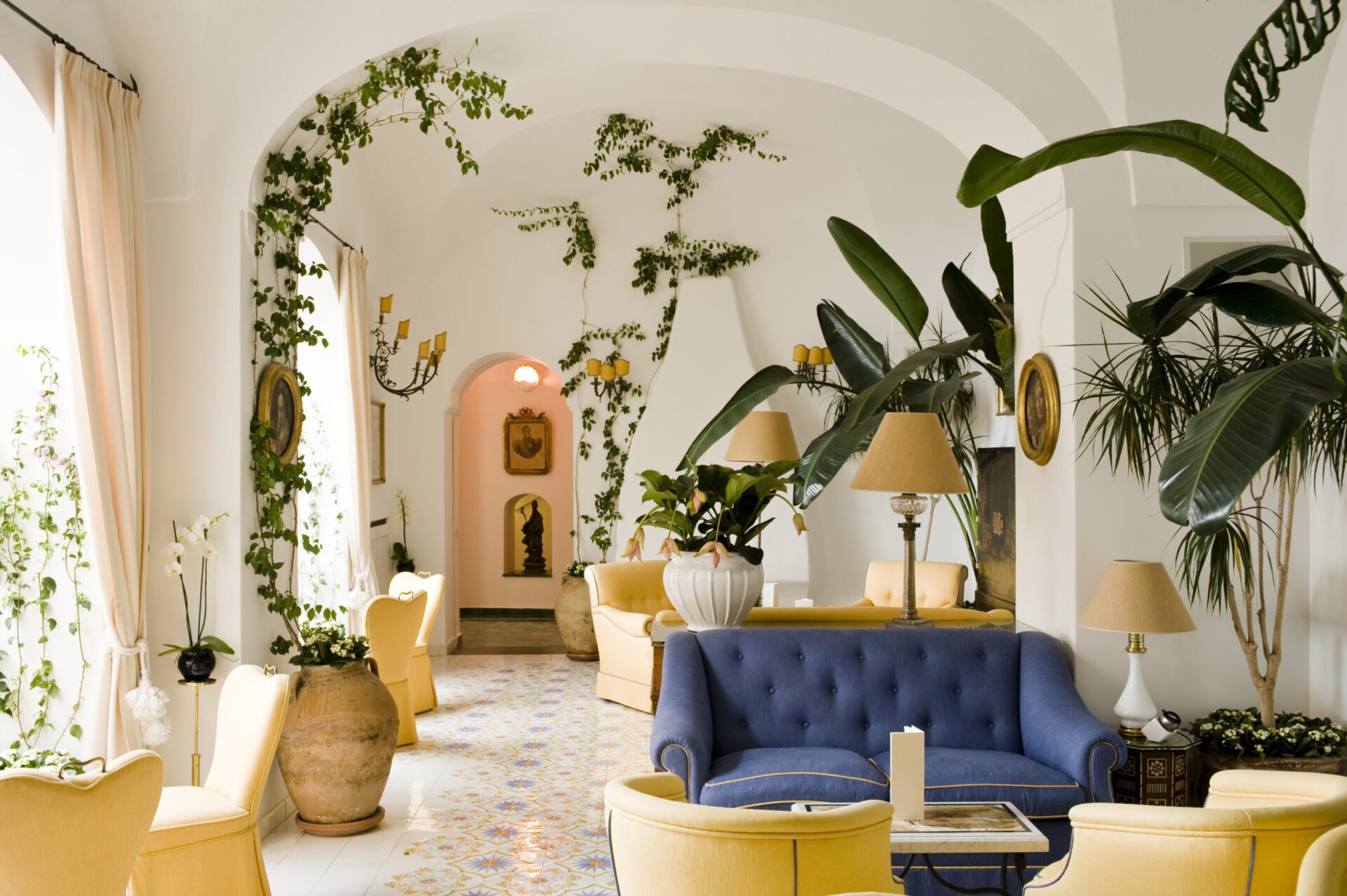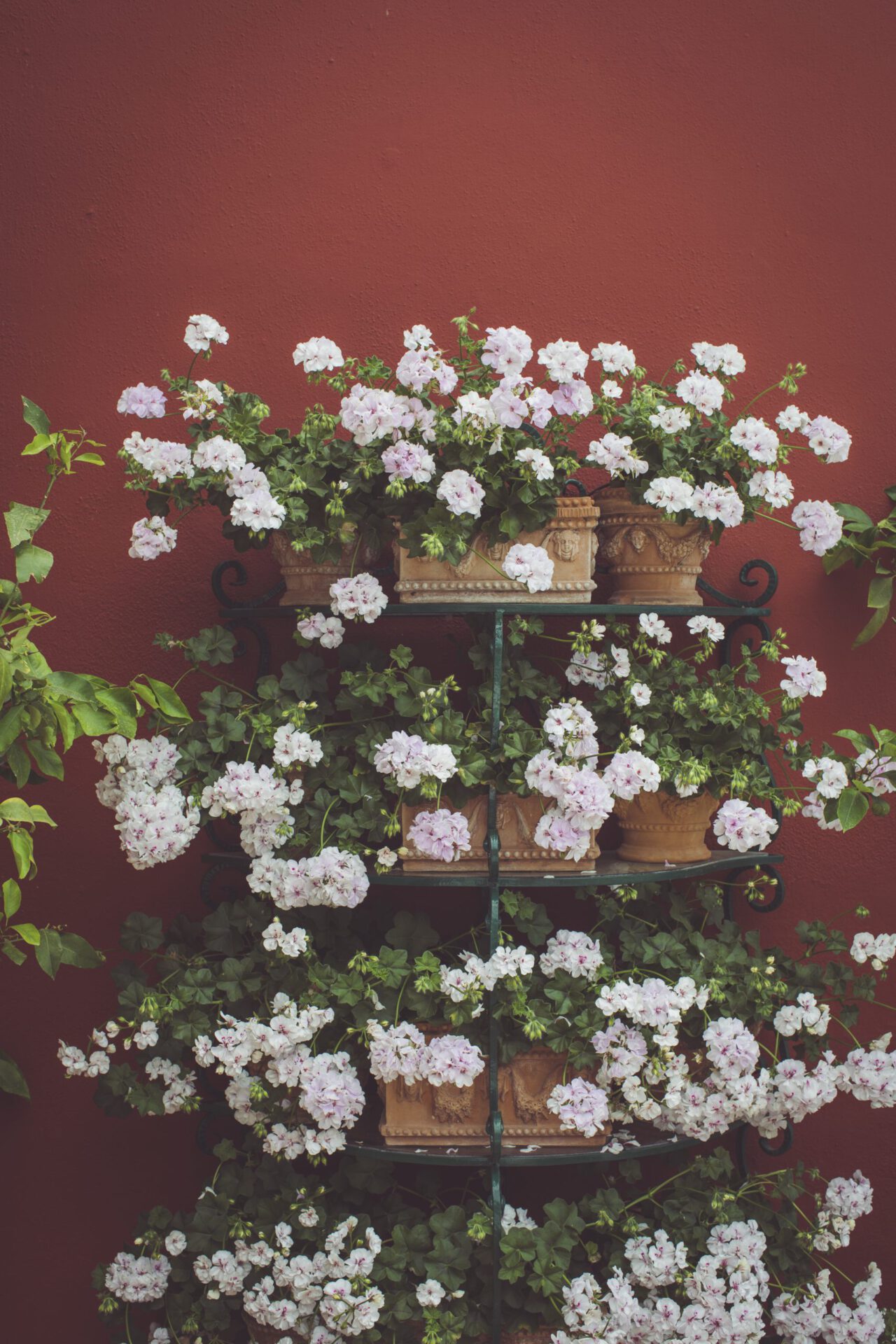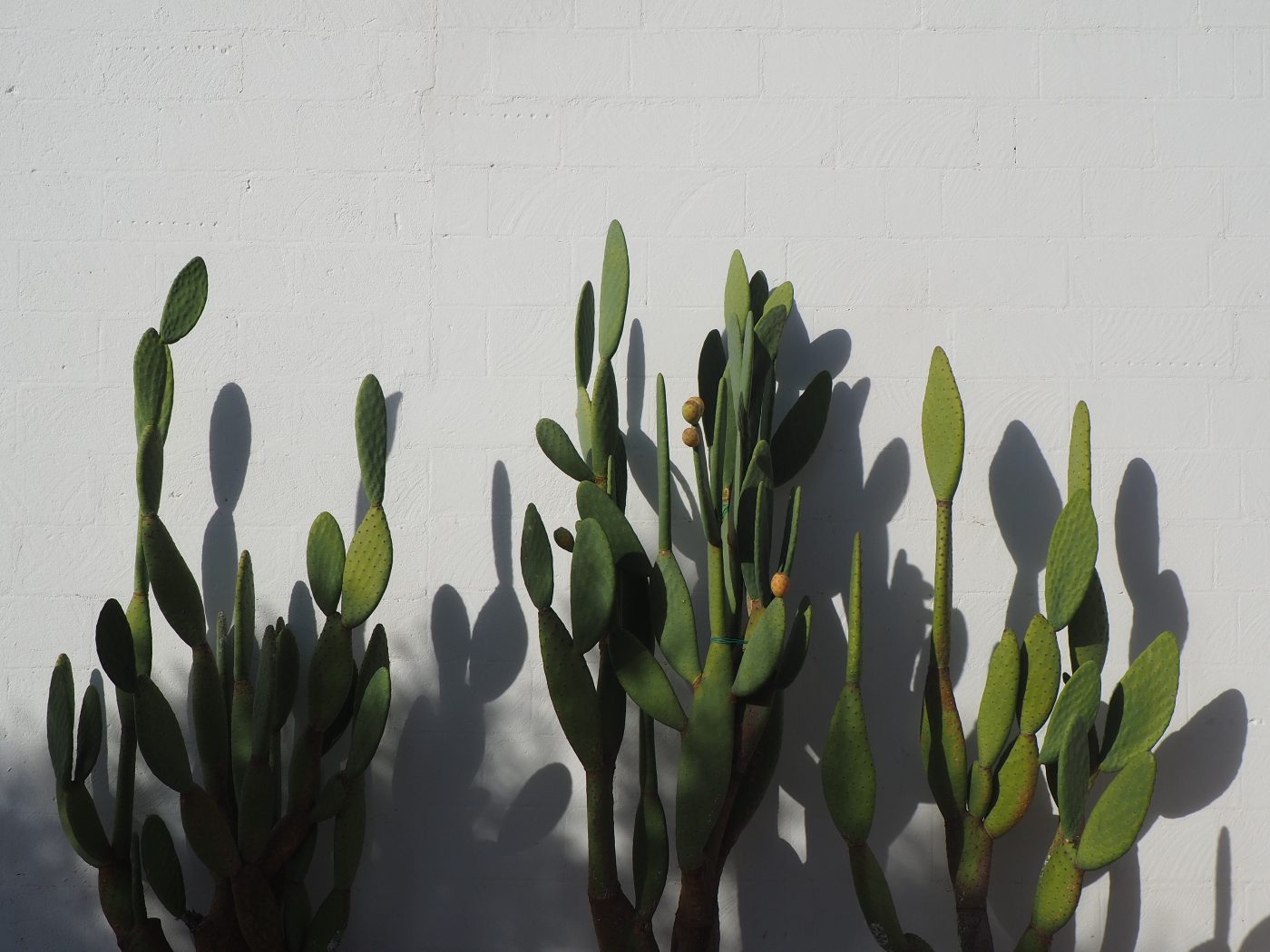Butera 28 Apartments
Palermo, Sicily
First up was the faded baroque grandeur of Palermo in Sicily, to slip between the pages of Il Gattopardo (The Leopard). This canonical read chronicling the effects that the reunification of Italy had on its aristocracy is the top selling novel in Italian history. Butera 28 – a 16th century palazzo tucked neatly into Palermo’s city walls – is where the book’s author, Giuseppe Tomasi di Lampedusa wrote this novel.
Welcomed by Duchess Nicoleta Polo Lanza Tomasi, wife of the revered author’s adopted son, Giacomo, I’m shown to a self-contained apartment with an exquisite, twisting wrought iron staircase that runs to a second floor mezzanine. The furniture is antique and the family’s own, rescued from Palazzo di Lampedusa–or what was left of it–after the Second World War bombings.
“It was in a horrible condition while he was writing the book–water would practically leak through the ceiling when it rained,” says Polo Lanza Tomaso on our tour of the palazzo, which after an impressive fifty-year restoration, is nothing less than resplendent.
I muse on the idea that the success of the novel had a lot to do with the fact that the author was a Sicilian aristocrat writing about the reunification of Italy and the demise of Sicily’s own aristocracy as the family palace crumbled around him.
Now, it consists of 12 rental apartments plus the Duke and Duchess’ own living quarters, in which Nicoletta hosts cooking classes from an impressive blue tiled kitchen. “I started this new adventure with no experience in the field at all–I just knew we had to make the palazzo earn money in order to keep it on,” says Nicoletta. Find one of our favorite recipes from Nicoletta at this link.
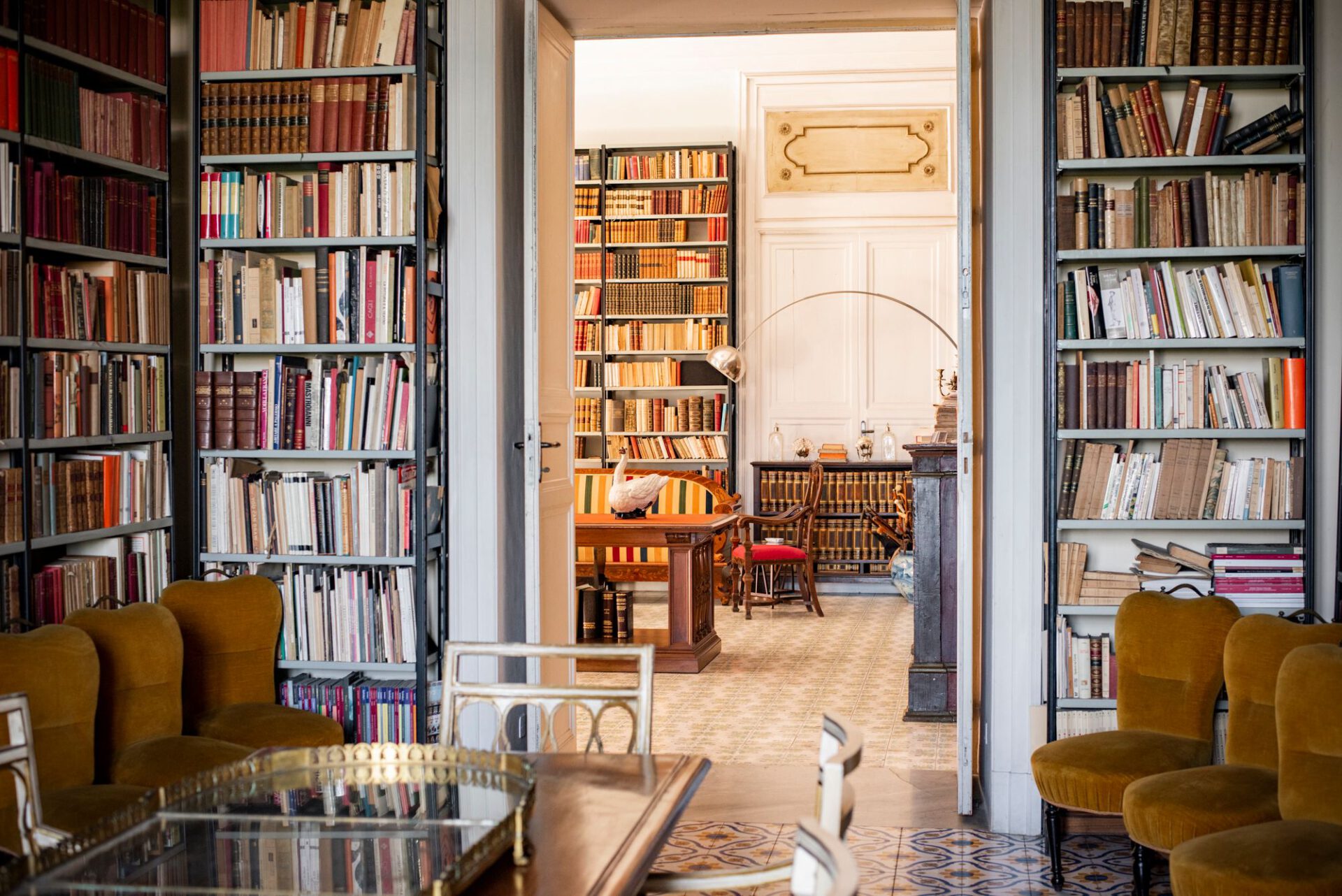
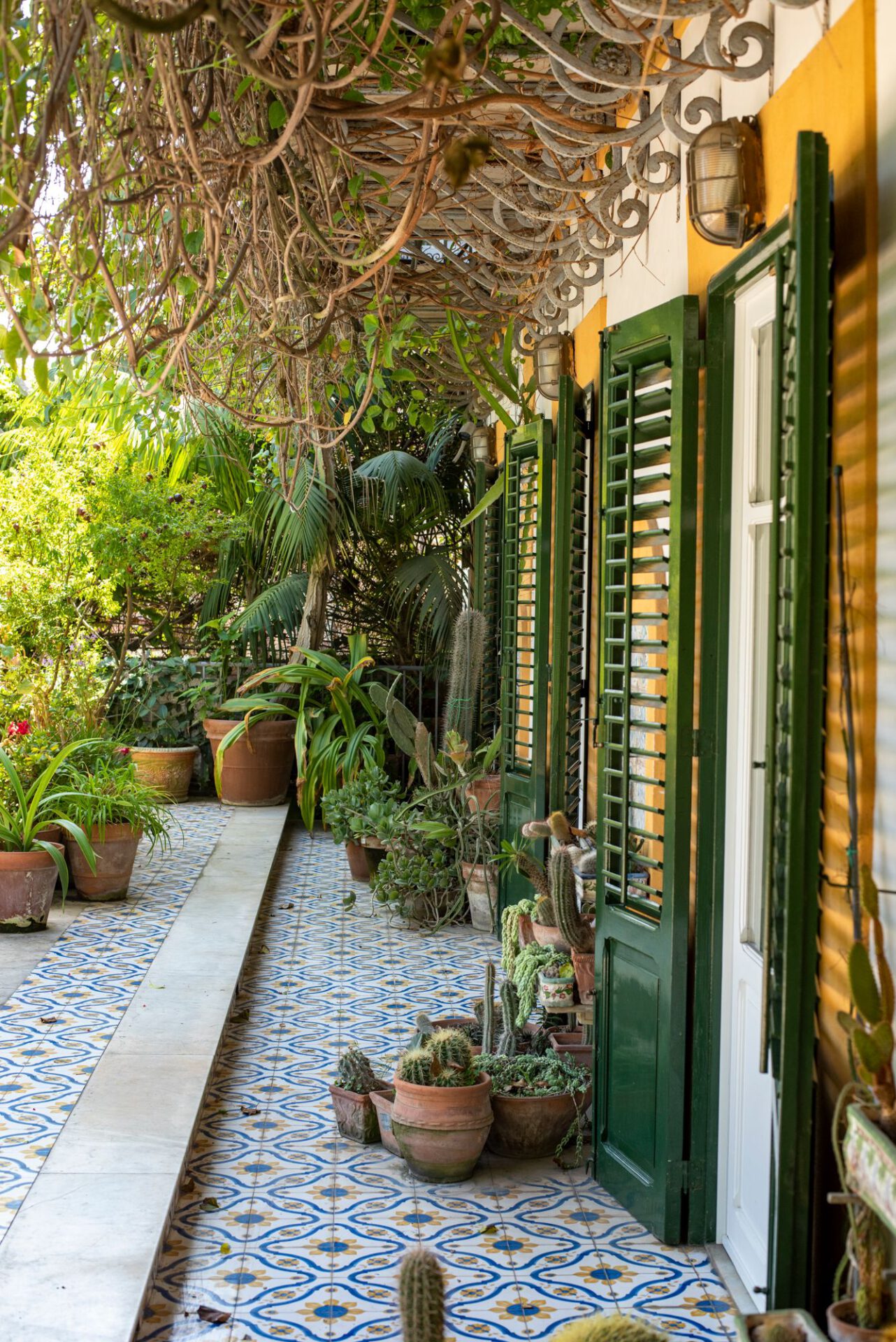
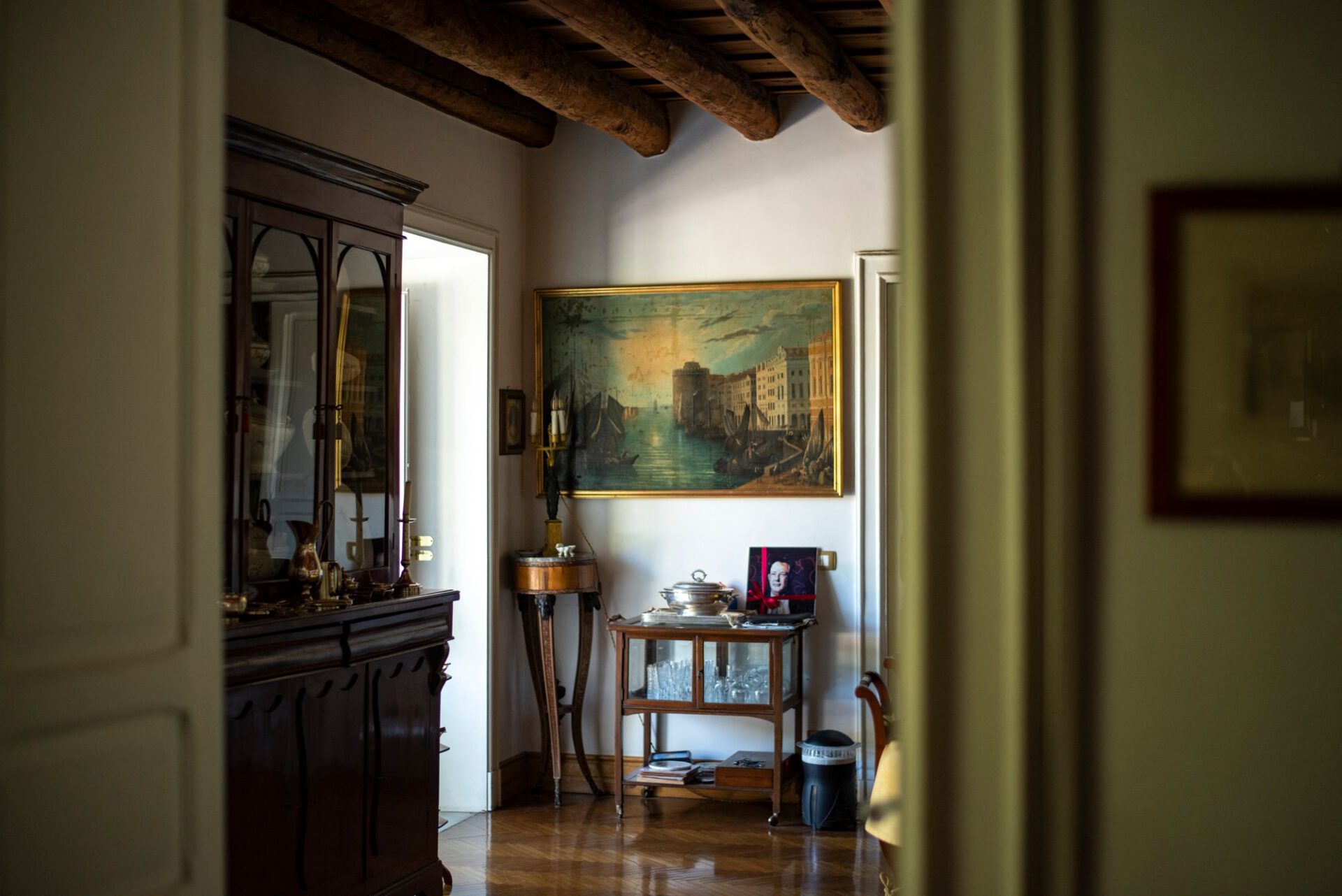
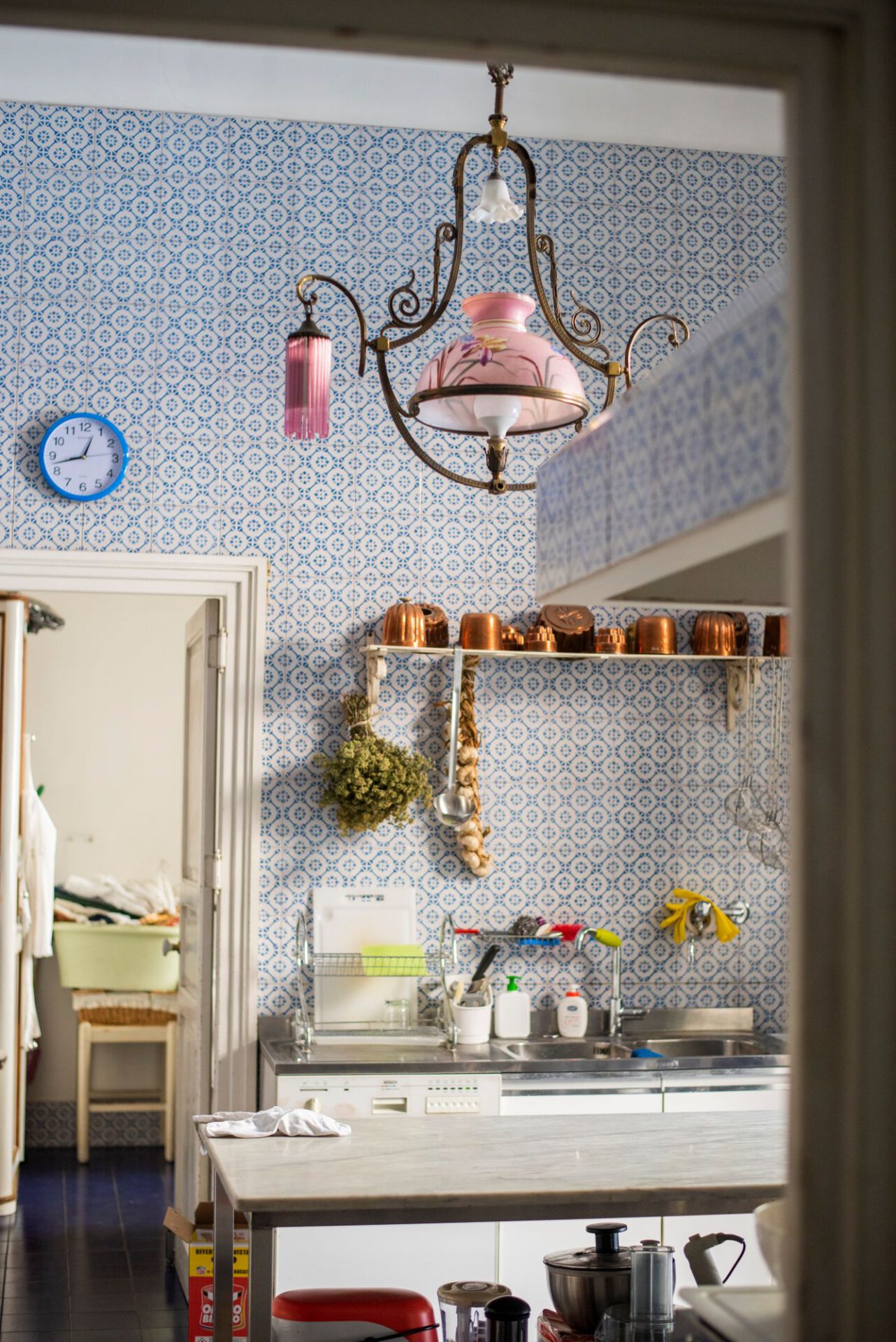
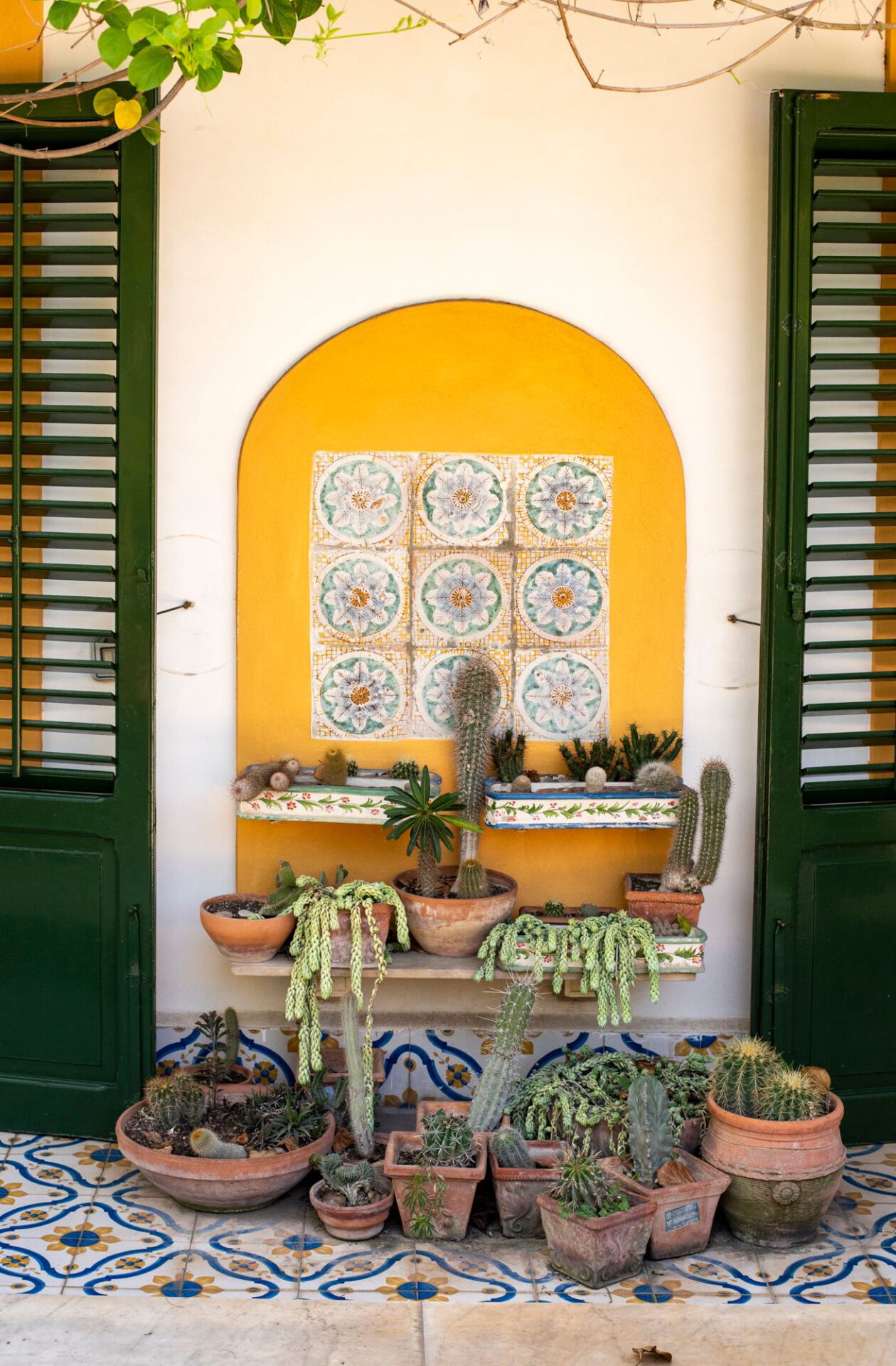

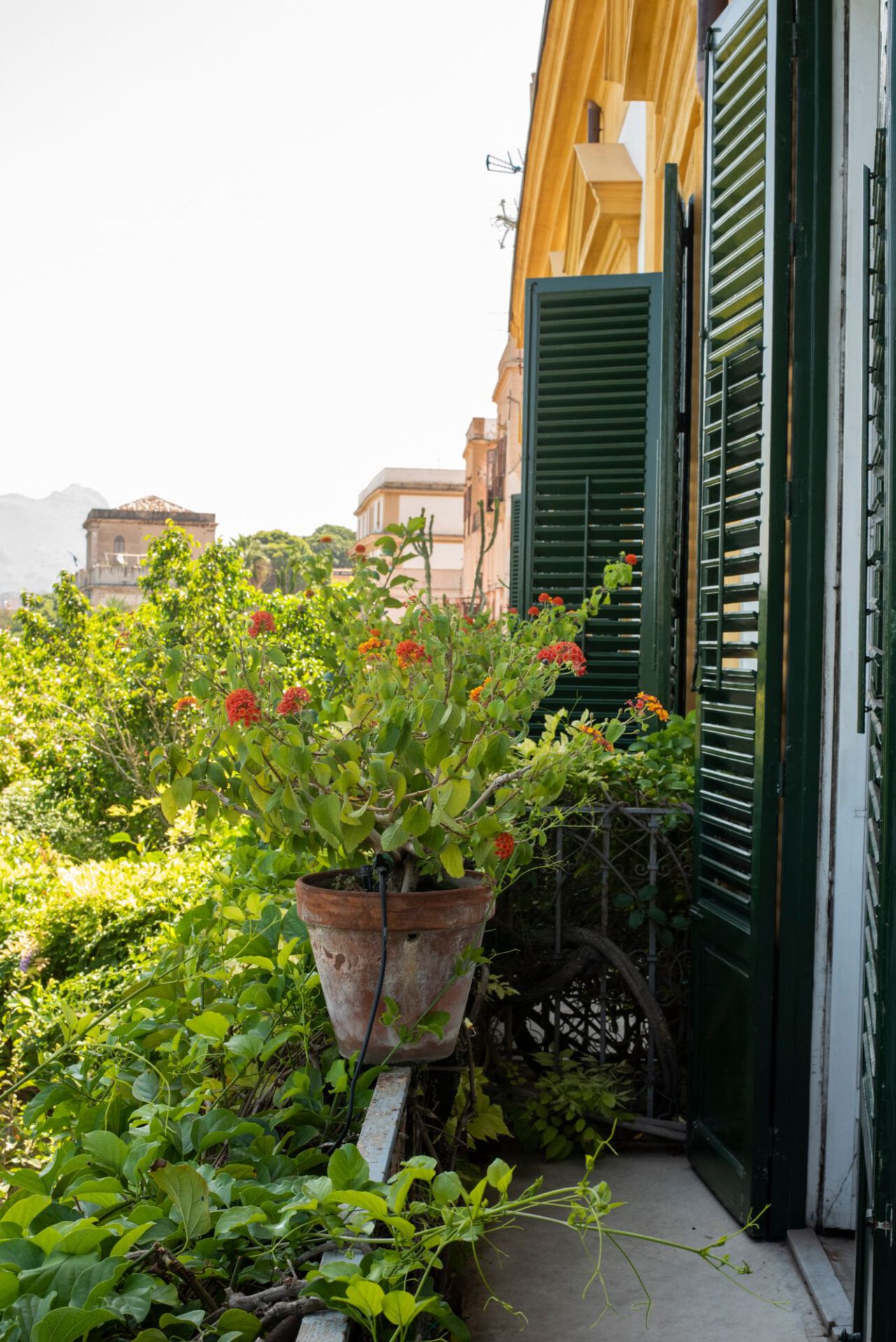
Palazzo Daniele
Gagliano del Capo, Puglia
Elsewhere, in the otherwise skippable town of Gagliano del Capo in southern Puglia, Palazzo Daniele seamlessly marries old and new. Built in the very year of Italy’s reunification (1861), the Palazzo still remains within the Daniele family and is the one, glorious design beacon to head to in this region.
After inheriting the Palazzo, art aficionado Francesco Petrucci used the building–with its impossibly high ceilings–as an exhibition space, bringing in Milanese designers Ludovica and Roberto Palomba for a sensitive renovation that respects the 19th century frescoes and original features. With nine suites, it’s been open as a hospitality concept for about five years and feels very much like a modern Italian home, albeit with designer lighting, a well-curated (and placed) selection of art and design books, and contemporary art pieces in each room. I’m so impressed by the light shades in my suite that I ordered one from Servomuto for my home.
At this palazzo, minimalist mid-century furniture takes the place of fancy antique pieces, and the space itself is allowed to breathe. This, to me, exemplifies Italian taste and refinement: an almost effortless unification of traditional and modern without things looking incongruous or out of place. The palazzo at once feels stately and homely, representative of both a by-gone era and a bold modernity.



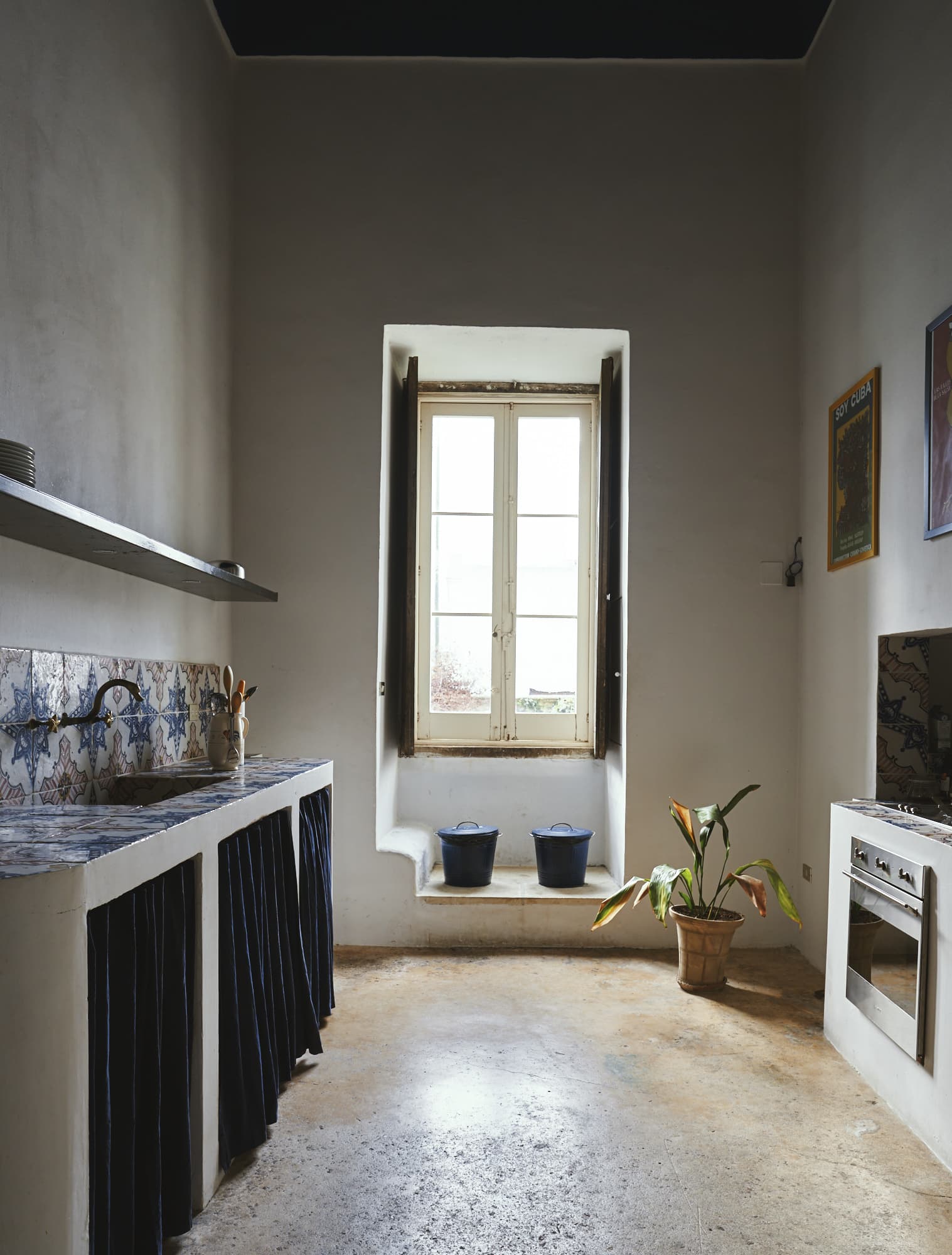

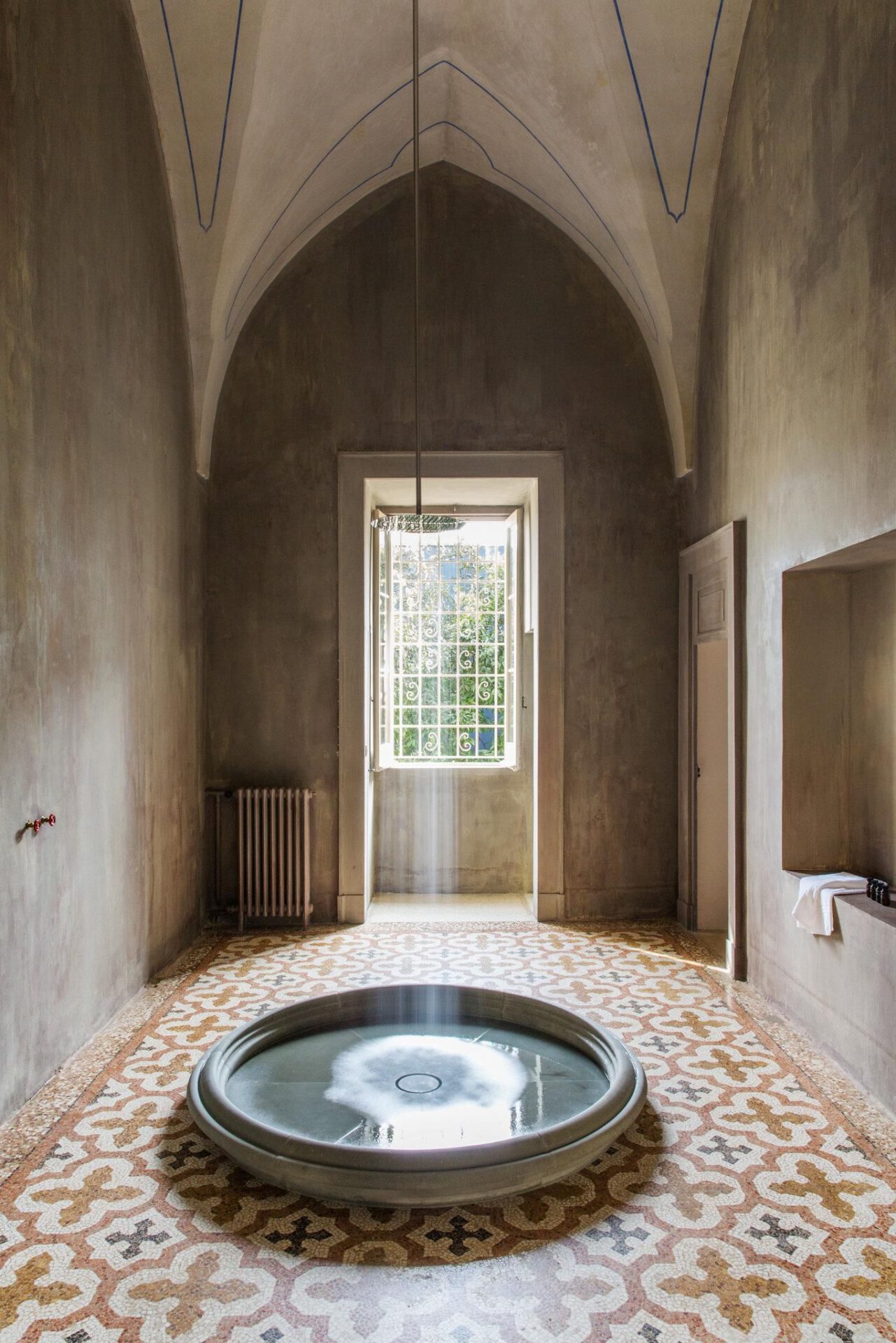

Masseria Potenti
Puglia
That feeling of being at home follows me throughout my trip through Puglia, as I become acquainted with the concept of the masseria. Typical of this agricultural region and built between the 16th and 19th centuries, masserias were once huge farm complexes owned by powerful families, churning out olive oil, fruit, and vegetables. Now these buildings, usually built around a large square courtyard, are being restored and renovated into hospitality concepts all over Puglia.
“The aim is to make our guests feel at home, completely relaxed and like they’re in nature–even if they are in the city,” says Francesco Funel at La Fiermontina, in Lecce. We’re in the olive grove garden and he’s regaling his place of work. “It’s unique because you don’t usually find masserie in towns, they’re usually in the countryside,” he tells me.
For those like me, in love with the farm-to-table concept, a Puglian masseria is the ultimate place to stay. At Masseria Potenti in Manduria or Le Mandorle in Ugento, guests dine on the produce grown on site and can even get their hands dirty in a cooking class.
What struck me most at Masseria Potenti was the way owner Maria Grazia expertly curates rustic elements–dried herbs hanging from a four poster bed, vintage linens collected over a lifetime used in the bedrooms–to nod to the building’s past and distill all that rural, Pugliese life is about. Chili hung from every wall while I was there, indicative of the Masseria’s dedication not just to hospitality, but to its workings as a farm. The draw here is a feel for the real Italy and a convivial atmosphere equivalent to the hug of a nonna.
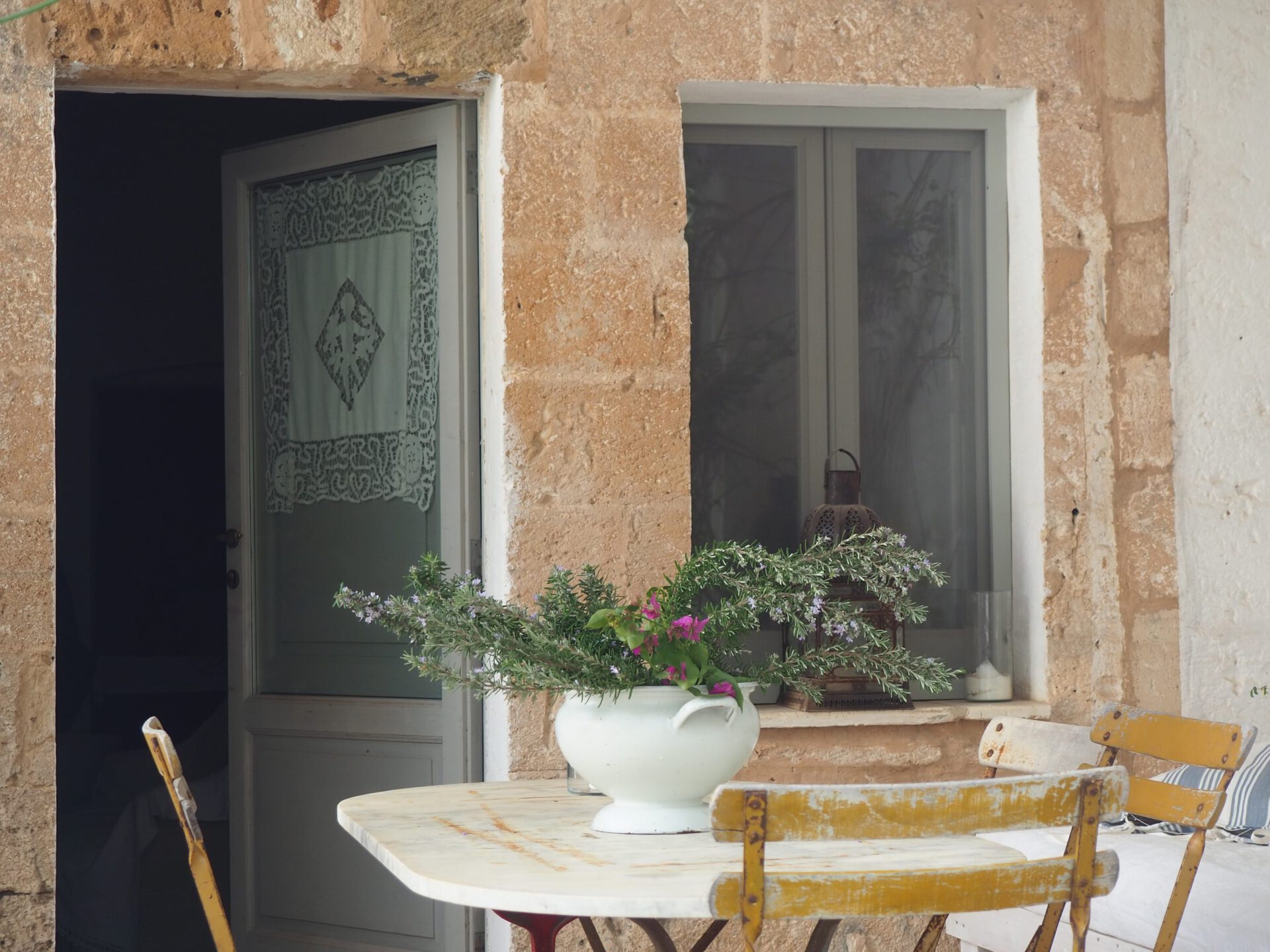
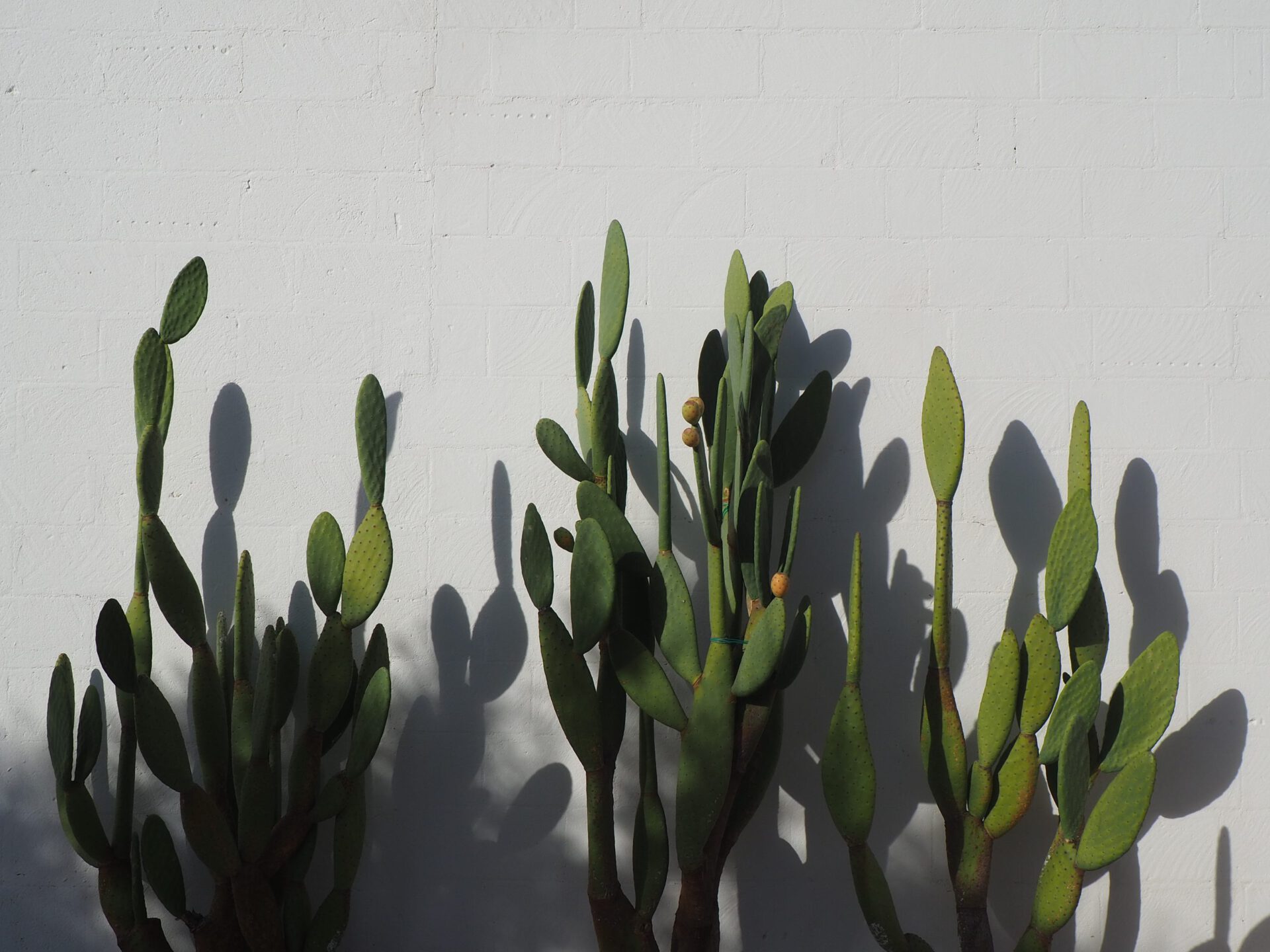
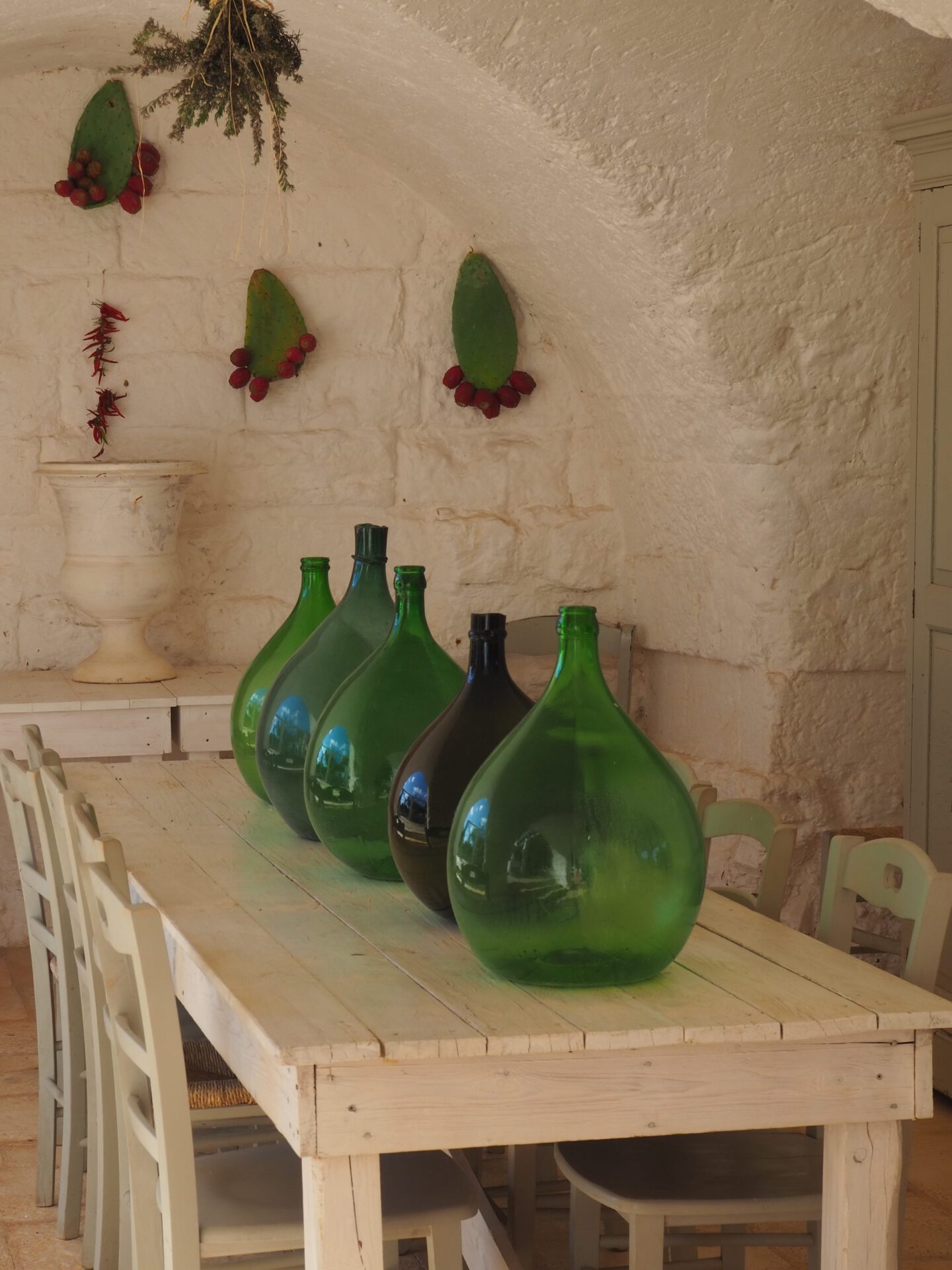
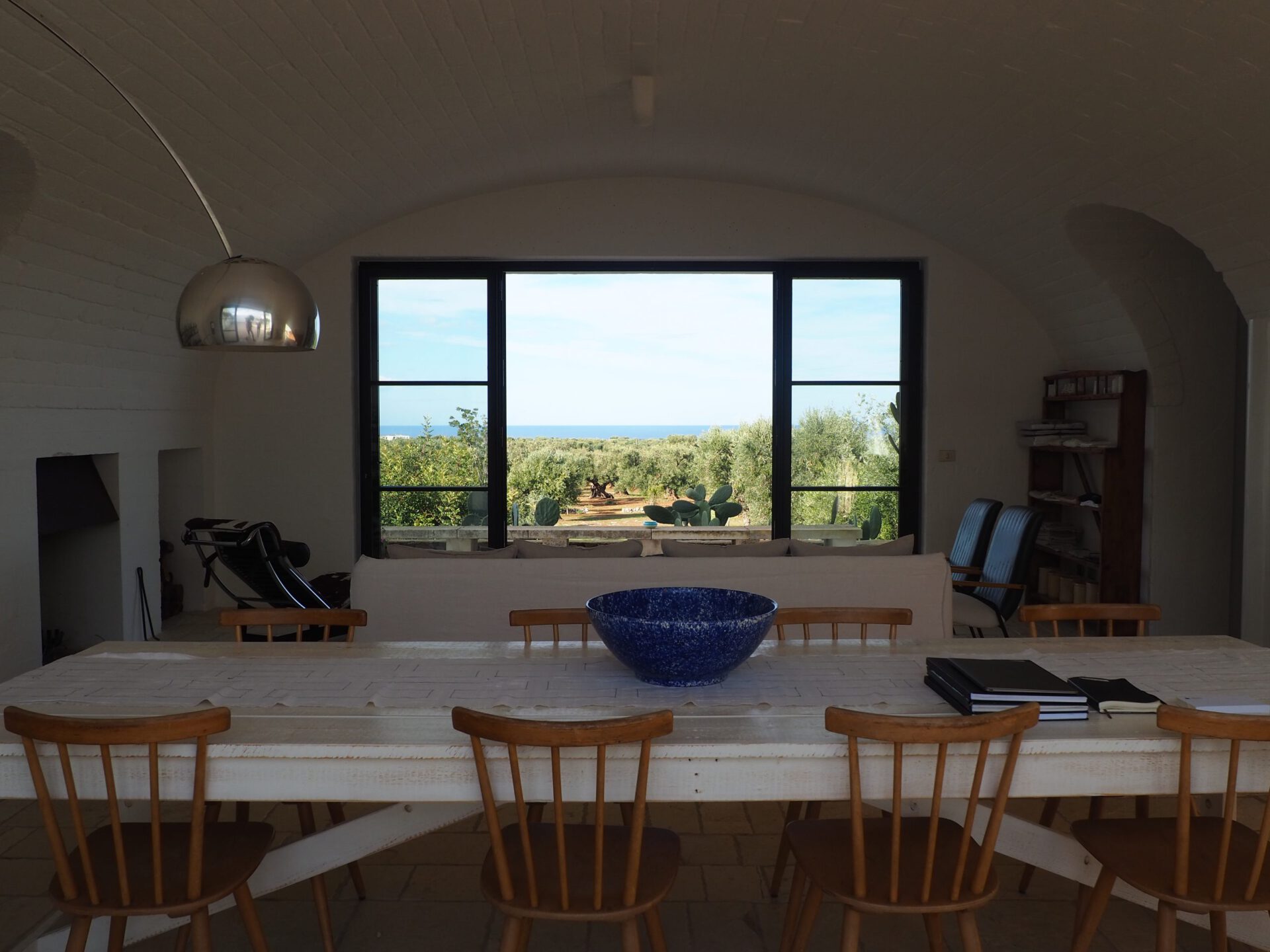
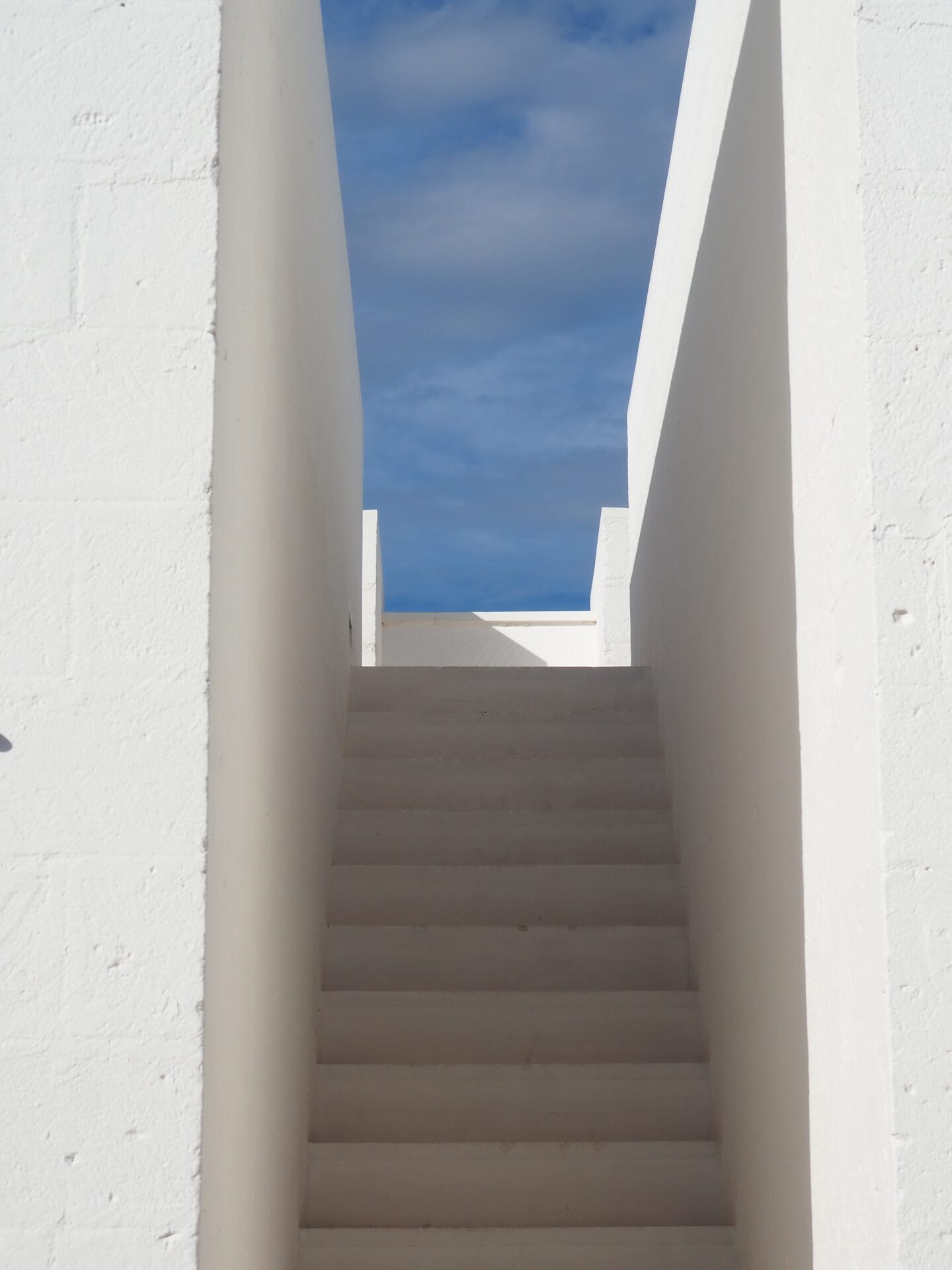
Sextantio Le Grotte Della Civita
Matera, Basilicata
When it comes to previously abandoned structures and towns, respecting and preserving remnants of the past has increasingly been on the agenda. In the last decade, the term “Albergo Diffuso” has been coined to describe hotels on historical sites that are bound by strict restoration rules and regulations, adding to their character.
On entry into the hotel Sextantio Le Grotte Della Civita in the ancient city of Matera, it becomes clear that a lot of care has been taken here to respect its complex history. Carved out of the stones of Matera, Le Grotte Della Civita is a series of thousands-year-old cave dwellings, inhabited up until 1952 when the Italian government evacuated its inhabitants. The town itself was considered the “shame of Italy” in the 1950s, as the caves that made up the town became overpopulated and unhygienic, with many families living alongside their animals. Since then, the caves have been abandoned, but a concentrated effort is now being made to bring life back to Matera.
My own cave room is lit by candlelight. Heavy, repurposed dark wood furniture and wrought iron detailing make up the atmosphere of a medieval home. A centrally positioned, tear shaped bathtub and indulgently soft bed add essential 21st century comforts to an otherwise archaic interior. I sit and eat persimmons–my welcome treat–on the bed and don’t find it hard to imagine what life must have been like for those living here many hundreds of years ago.
In the morning, I enjoy the most lavish buffet breakfast (cheeses, cold cuts, fruit, yogurt, and an endless array of cakes) with a view of the neolithic dwellings across the vast gorge, gouged out of the sides of the rock Matera is built on. It feels fantastical and other worldly. Only owing to the meticulous preservation and restoration afforded to places like this in Italy, is this all possible.

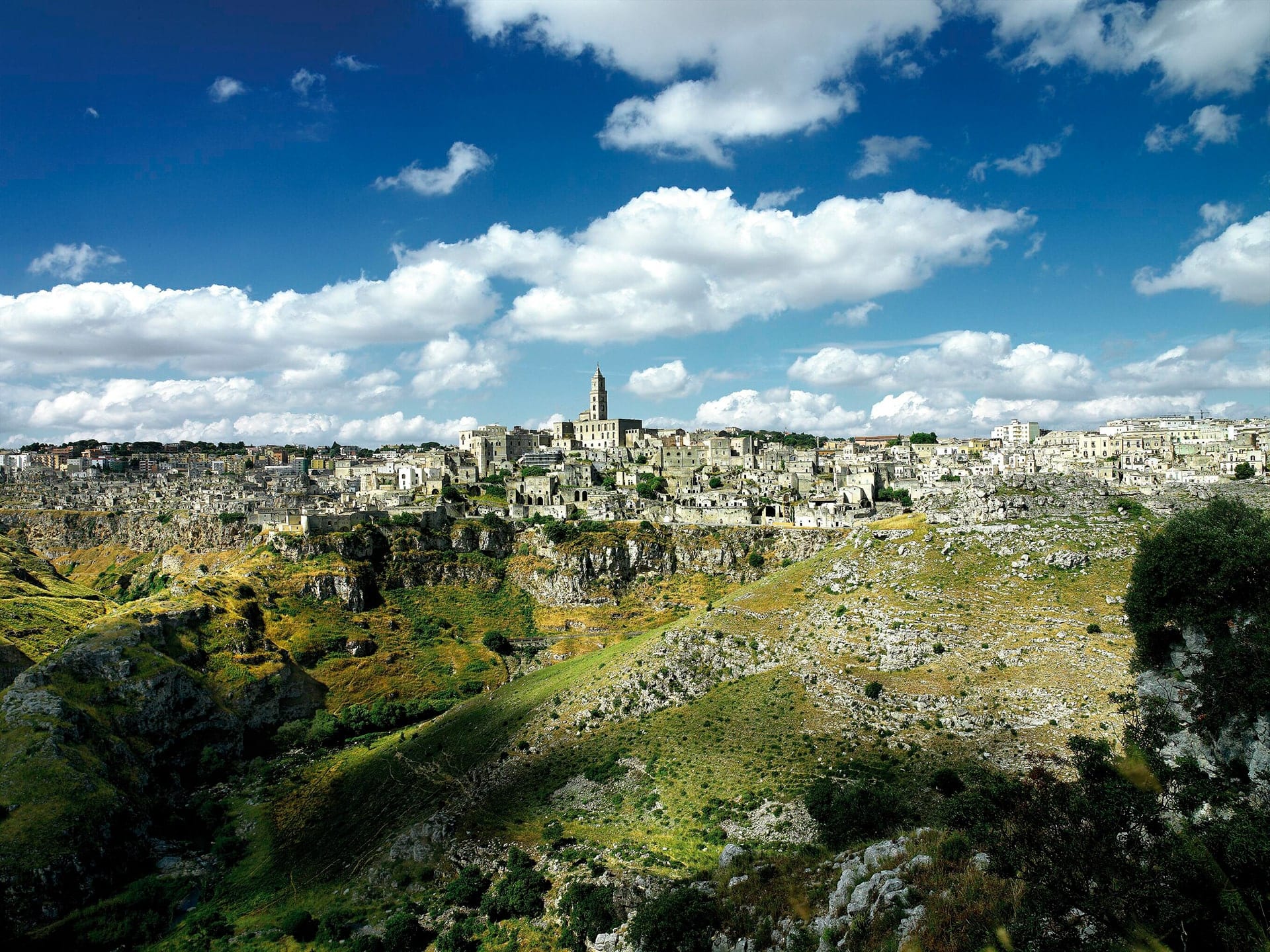

Le Sirenuse
Positano
On the Amalfi Coastline, I’m welcomed at perhaps the most hospitable luxury hotel I’ve ever had the pleasure of visiting. A five star with a hefty price tag on dinner, let alone on the suites, can feel intimidating, though Le Sirenuse in Positano is anything but. Perhaps owing to its history as a holiday home for the Sersale family, or to the friendly Neapolitan spirit, or purely to the owners’ good heartedness, Le Sirenuse is an arms-wide-open kind of hotel–one that breathes the spirit of Italy.
Despite it being a 58-room hotel with a smart, white tablecloth restaurant and an ever-expanding brand that incorporates Emporio Sirenuse clothing and Eau d’Italia cosmetics, Le Sirenuse still manages to feel intimate. In true Italian style, it’s been kept within the family.
Flora and fauna sprout and grow up walls and along ceilings in the dining room, uniting this inside world with the rich, color-splashed town of Positano, dipping into the sail-boat-dotted blue just beyond the windows. It hasn’t lost its charm as a family home, and irreverent details are everywhere to be found. My plate at dinner is decorated with childlike illustrations of farm animals. Glazed ceramic tiles–a different color and pattern for each floor of the hotel–add to the upbeat energy of the space, while vintage furnishings and modern art bring the luxury element to this Bordeaux-toned fun-house.
I call it a fun house not just because of its bright interiors, but because of its post-war boom feel. At dinner, a three-piece band sings ‘That’s Amore”, and my server jokes that they’ve been doing this same set for the 20 years he’s worked here, accurately predicting that “Come fly with me” is up next. I’m laughing too hard to order. Owner Antonio and his wife Carla are at dinner with their friends, mingling with guests and insisting we all have a good time. “Just enjoy it–forget about Covid, look at where you are,” Antonio says.
Thanks to Covid, my road trip through Italy was cut short by two weeks, but Le Sirenuse was the ultimate climax; a perfectly distilled combination of old world refinement and the enduring warmth of Italians into a hotel. It could only exist here.
